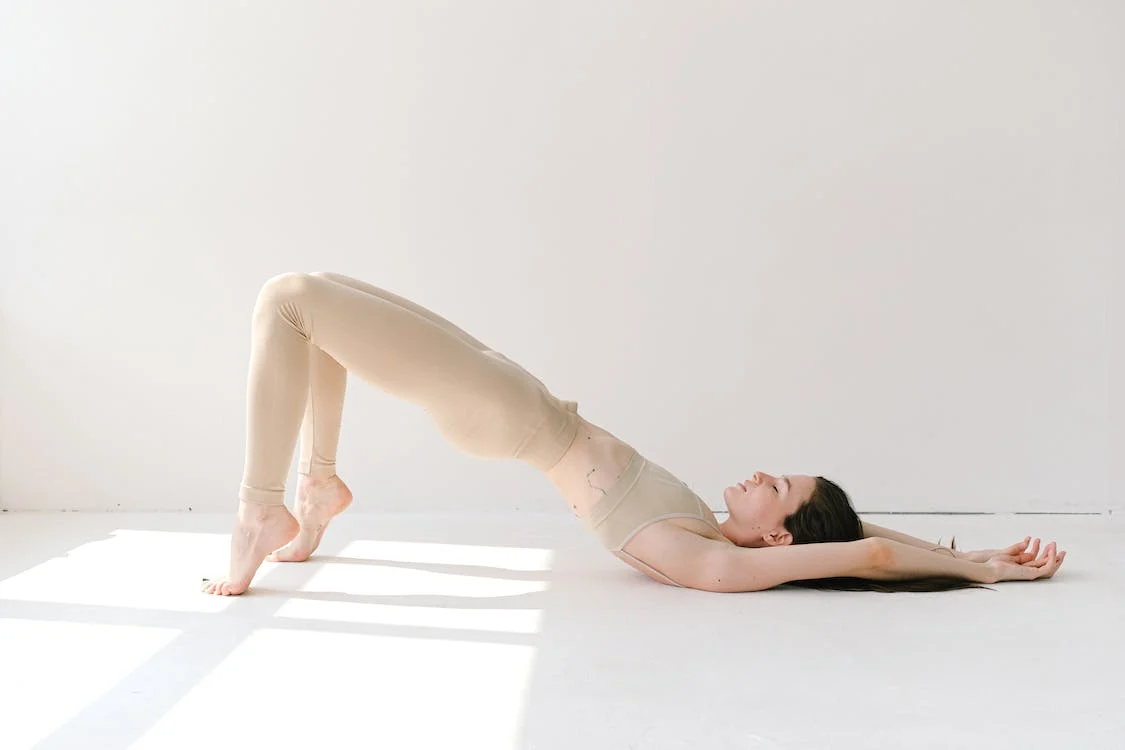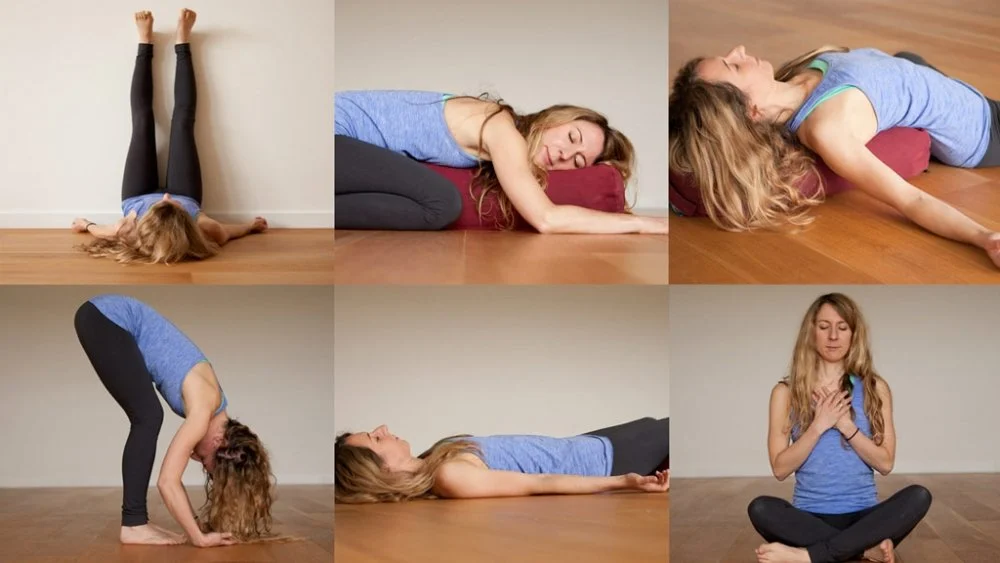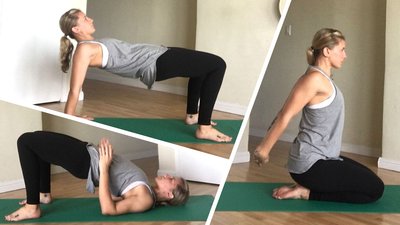In today’s fast-paced world, stress has become an all-too-familiar companion. It lurks in the corners of our daily lives, be it from work deadlines, personal relationships, or the ongoing global events that impact us on a large scale. Finding effective ways to manage stress is crucial for maintaining our mental health and overall well-being. One such holistic approach that has gained popularity over the years is yoga. Yoga, an ancient practice with its roots in India, is not just about physical fitness; it’s also a powerful tool for mental and emotional healing.
Among its numerous benefits, yoga offers specific poses aimed at stress relief and relaxation. These poses help in reducing cortisol levels (the stress hormone), calming the mind, and rejuvenating the body. Whether you are new to yoga or a seasoned practitioner, incorporating these calming yoga poses into your routine can be a game-changer for tackling stress.
Let’s explore 10 yoga poses that are particularly effective for stress relief and relaxation, promising a serene escape into tranquility.
Benefits of Yoga for Stress Relief:

Yoga, an ancient practice with roots stretching back thousands of years, is more relevant today than ever as a tool for stress relief. In our fast-paced world, finding effective ways to manage stress is crucial for maintaining mental, emotional, and physical health.
Importance of Stress Management:
Stress is an inevitable part of life, but when it becomes chronic, it can lead to a host of health issues including anxiety, depression, heart disease, and more. Effective stress management is not just about coping with stress, but actively reducing and preventing it to improve quality of life. Employing healthy strategies for stress management enhances resilience, reduces the risk of illness, and promotes overall well-being.
How Does Yoga Help in Stress Relief?
Yoga offers a holistic approach to stress relief, blending physical postures, breathing techniques, and meditation to calm the mind, relax the body, and elevate the spirit. This unique combination helps to lower stress hormones, increase body awareness, release physical tension, and focus the mind away from cluttered thoughts. Regular yoga practice has been shown to improve sleep, enhance mood, and boost energy levels, all of which are negatively impacted by stress.
Top 10 Yoga Poses for Stress Relief:

Incorporating yoga into your routine can be a powerful way to combat stress. Here are ten yoga poses that are particularly effective for stress relief. Each pose combines physical movement with controlled breathing to foster relaxation and peace.
- Child’s Pose
Child’s Pose (Balasana) is a resting posture that gently stretches the back, hips, thighs, and ankles while calming the brain and helping to relieve stress and fatigue. Sit on your heels, fold forward, rest your forehead on the floor, and extend your arms forward or by your sides. This pose embodies surrender and offers a sanctuary of stillness and comfort.
- Cat-Cow Pose
The Cat-Cow Pose (Marjaryasana-Bitilasana) is a gentle flow between two poses that warms up the spine and relieves stress and tension in the torso. Begin on all fours, inhale as you arch your back downward (Cow), and exhale as you round your spine upward (Cat). This motion helps to create emotional balance and focuses the mind on the present moment.
- Downward-Facing Dog Pose
Downward-Facing Dog Pose (Adho Mukha Svanasana) is one of the most recognized yoga poses, known for its ability to relieve stress, energize the body, and promote calmness. It stretches the shoulders, hamstrings, calves, and hands while strengthening the arms and legs. The inversion element of this pose also helps to calm the brain and relieve headaches.
- Standing Forward Bend Pose
Standing Forward Bend Pose (Uttanasana) is beneficial for easing tension in the back, shoulders, and neck, areas where stress often accumulates. From a standing position, bend forward from the hip joints, not from the waist, to lengthen the torso. Allow your head to hang freely to encourage a calming effect on the brain.
- Legs Up the Wall Pose
Legs Up the Wall Pose (Viparita Karani) is a restorative posture that promotes relaxation by reversing blood flow and improving circulation. This pose involves lying on your back with your legs extended vertically against a wall. The gentle inversion is excellent for relieving mild backaches and is highly restorative for the mind and body.
- Corpse Pose
Corpse Pose (Savasana) is the ultimate relaxation pose, typically performed at the end of a yoga session. It fully relaxes the body and is critical for mental and physical recovery. Lying flat on your back with limbs gently splayed open, close your eyes, and breathe deeply, allowing stress and tension to melt away with each exhale.
- Bridge Pose
Bridge Pose (Setu Bandhasana) is an invigorating backbend that opens the chest and stretches the neck and spine. This pose promotes relaxation by reducing anxiety and fatigue. Lie on your back, bend your knees, and set your feet on the ground. Lift your hips towards the ceiling, clasping your hands below your pelvis. This pose is known for stimulating the abdominal organs and thyroid glands, promoting better digestion and hormonal balance.
- Seated Forward Bend Pose
Seated Forward Bend Pose (Paschimottanasana) stretches the spine, shoulders, and hamstrings while helping to calm the nervous system and reduce stress. Sit with your legs extended in front of you, inhale and lengthen your torso, then exhale and gently fold over your legs. This pose encourages introspection and soothes headaches and anxiety.
- Easy Pose
Easy Pose (Sukhasana) is a comfortable seated position for meditation that promotes tranquility and peace. Sitting cross-legged, with your hands on your knees, lengthen your spine, and relax your shoulders. Close your eyes and focus on deep, rhythmic breathing. This pose fosters mental calmness and physical relaxation.
- Pigeon Pose
Pigeon Pose (Eka Pada Rajakapotasana) is excellent for releasing deep-seated stress in the hips, where many people hold tension. Starting from a Downward-Facing Dog Pose, bring your right knee forward to your right wrist and extend your left leg back. Sink into the pose and allow the stretch to dissolve tension. This pose opens the hip joint, reducing stress and improving flexibility and mobility.
Through these ten yoga poses, individuals can effectively manage stress and cultivate a state of relaxation that permeates both mind and body. Regular practice can lead to significant improvements in mental health and overall well-being.
How to Practice Yoga Safely for Stress Relief?
Yoga, with its emphasis on mindfulness and body awareness, has become a popular way to alleviate stress. When practiced correctly, yoga can help reduce tension, promote relaxation, and improve overall mental health. However, to receive these benefits, it’s crucial to approach yoga safely, particularly focusing on proper form, listening to your body, and utilizing effective breathing techniques.
Importance of Proper Form
The foundation of a safe and effective yoga practice is the proper form. Each pose is designed to stretch and strengthen specific parts of the body, and maintaining the correct alignment is crucial to ensure you’re benefiting from the pose without risking injury. Here are some tips for maintaining proper form:
- Structured Progression: Always start your practice with simpler poses before moving on to more complex ones. This helps the body to get warmed up and lessens the risk of strain or injury.
- Use of Props: Don’t hesitate to use tools like blocks, straps, or a yoga blanket to help you achieve and maintain alignment, especially in poses that are challenging for you.
- Follow Qualified Instruction: Whether it’s through in-person classes, online tutorials, or guided apps, make sure the instructions you’re following come from a qualified yoga instructor. They can provide specific guidance on how each pose should feel and how to adjust your body safely.
- Awareness of Alignment: Pay close attention to the alignment cues provided by your instructor for each pose. Alignment not only prevents injury but also maximizes the effectiveness of the pose for stress relief.
Listening to Your Body
One of the most valuable aspects of yoga is developing a deeper connection with your body. This can also be a critical tool in practicing yoga safely:
- Recognize Your Limits: Understand that flexibility and strength vary greatly from person to person. If a pose causes pain beyond mild discomfort or feels forced, it may not be suitable for you at this time.
- Trust Your Intuition: Your body knows what it needs. If a particular movement feels good, it’s likely beneficial. Conversely, if something feels wrong, give yourself permission to back off or modify the pose.
- Rest When Needed: Incorporating rest or a pose like Child’s Pose between more challenging poses helps manage your energy and prevents overexertion.
Breathing Techniques for Stress Relief During Practice:
Breathing is a central element of yoga, not only aiding in stress relief but also in maintaining focus and stability in your practice. The following are some effective breathing techniques:
- Diaphragmatic Breathing: Also known as deep belly breathing, this technique involves deep, even breaths that engage the diaphragm and fill the lungs with air. It’s particularly useful for reducing anxiety and calming the mind.
- Ujjayi Pranayama: Often referred to as “the ocean breath,” this involves breathing deeply in and out through the nose with a slight constriction at the back of the throat. This method helps in maintaining rhythm during your practice and focuses the mind.
- Nadi Shodhana: Also known as alternate nostril breathing, this practice can harmonize both hemispheres of the brain, reduce stress, and promote mental clarity. It involves using the fingers to alternately close one nostril while breathing in and then switching nostrils as you breathe out.
Incorporating these practices into your yoga routine can significantly enhance your ability to manage stress and improve your mental health. Proper form, listening to your body, and focusing on breathing not only ensure a safer yoga practice but also a more beneficial one.
Conclusion
Incorporating these 10 yoga poses into your daily routine can significantly contribute to reducing stress and enhancing your overall mental health. Each pose, from the Child’s Pose to the Corpse Pose, is designed not only to release physical tension but also to foster a sense of peace and relaxation within the mind. Remember, the key to experiencing the full benefits of these poses is consistency and mindfulness.
As you move through each pose, focus on your breathing and allow yourself to be present in the moment. This practice doesn’t just end on the mat; it extends into daily life, promoting stress management and emotional well-being. Embrace these yoga poses as tools not only for stress relief but also as steps towards a more balanced and serene lifestyle.
